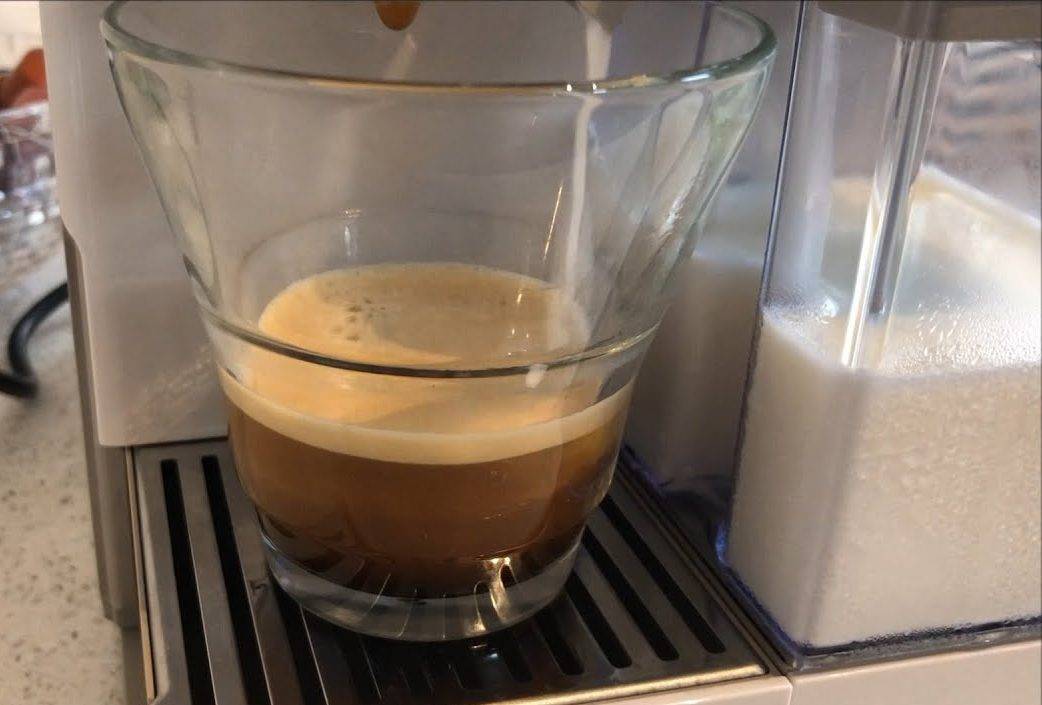How to Reset a Nespresso After Descaling
The question of how to reset a nespresso after descaling may seem to be as simple as pressing the power button. When you push the power button, the descaler light on the machine will blink three times in three seconds. After the blinking stops, the light will switch to a steady green light. The machine should now produce the same type of coffee it made when it arrived in the box. Once you’ve done this, you can start to customize the coffee maker again.
Flashing descaler light
If you notice that the light on your Nespresso has started blinking, it is probably due to descaling. You may have accidentally triggered the descaling process. To get out of this mode, follow the steps below. If the flashing light continues, you may need to clean the machine. Follow these steps to reset the Nespresso after descaling.
First, you must remove the water from the k-cup. It may be clogged. Once the water has drained, press the descaler button to start the descaling process. If the light continues to flash, the water tank may be empty or it may be blocked by another object. In this case, you should wait for a few minutes and then try brewing again.
You can also try using white vinegar as a descaler. You can place one or more tablespoons of vinegar in the water chamber. Turn the machine off halfway through the brew cycle. Then, leave it alone for one hour. Regular descalers may skip this step. Using white distilled vinegar removes scale and lime buildup. If the light flashes after removing the vinegar, you can use another type of descaler.
The descaler light on a Nespresso is a signal that the machine needs to be descaling. You can descale the machine manually or purchase a special descaler from an authorized technical service center. Once the cleaning process is complete, you can resume making coffee. Then, follow the steps below to get your Nespresso back to working properly.
Getting out of descaling mode
If you’re having trouble getting your Nespresso machine to descale, you may have a problem with descaling agent. In order to get out of descaling mode, you must empty the used capsule container and cup support from the machine. Next, you should turn the machine back on. Wait for seven seconds until the descaling mode button blinks. Wait for a few seconds to allow the descaling agent to flush out. You should be able to exit the mode in about 10 minutes.
If you’ve pushed the button for more than 6 seconds, you’ll see a blinking light on the Nespresso machine. Holding the button for seven seconds should do the trick. The next time you use the machine, push the button again for 7 seconds and it should start the descaling process again. Once this has completed, simply turn the machine off again to let it cool.
To get out of descaling mode on your Nespresso machine, first turn it off. If you’re using a Vertuo, simply fill the 0.8-litre container with water. Then, turn it on. After ten minutes, the descaling process will be complete. When it’s finished, remove the sachet from the water container and place the Nespresso back into an unlocked position.
To get out of descaling mode on a Nespresso Vertuo machine, you must press the power button for seven seconds. After ten minutes, you should be able to use the machine. Otherwise, you may need to repeat the process a few times to get it back to its original settings. If you still have trouble using the Vertuo after de-scaling, contact the manufacturer for assistance.
Cleaning a nespresso machine
To maintain the highest quality coffee, you should regularly clean your Nespresso machine. According to Nespresso’s manual, you should descale your machine every three months or 300 capsules. Hard water contains more minerals than soft water, and de-scaling your machine is a good idea every three months. You can check the mineral content of your water by purchasing a low-cost water testing kit.
There are various methods for descaling Nespresso machines. You can use home-based solutions or other products that are specifically designed for this purpose. Make sure to have fresh water handy, as well as a decent container to dispose of the used water. The instructions for descaling a Nespresso machine will be different for each model. To find out what method is right for your model, refer to the manual and the instructions on the company’s website.
To get rid of calcium and lime deposits, you can purchase a special Nespresso descaling solution. The solution will remove mineral deposits that are the result of untreated water. Leaving these deposits behind can cause the machine to malfunction and produce an unpleasant taste. To ensure that your machine continues to function optimally, use the descaling solution kit from Nespresso. The descaler contains two bottles of solution. You can also use a commercial de-scaling solution, which is gentle on aluminum and metal parts.
Once you have completed descaling, you can begin cleaning your Nespresso machine by following the steps above. Firstly, empty the water tank into the sink. Then, you need to wipe it with a microfiber cloth. You can also clean the capsule detector lens with a microfiber cloth. However, avoid using water, as this can cause damage to the device’s lenses.
Adding descaler
After removing the sachets, you can use descaler to clean and disinfect the machine. Some machines need more time to descale than others. If you do not have the appropriate descaler, it is okay to use a commercial one as long as you follow the manufacturer’s instructions. It takes about ten minutes to descale a Nespresso machine.
To descal the machine, add one tablespoon of acetic acid and two teaspoons of water to the reservoir. Let the water flow for five minutes or so, then turn off the machine. This will remove the coffee grounds that are left behind after removing the capsules. You should repeat the process every six months or 600 coffees, depending on the model. In between, let the water drain from the reservoir to clean the grounds.
You can use lemon juice or vinegar to descale your machine. Lemon juice will work, but it has a horrible smell and requires a large amount of lemon juice. You must also ensure that you dispose of the solution properly after use. Use Nespresso’s recycling services to recycle any descaling solution that you’ve used. It will take around 30 minutes for the whole process to complete.
To ensure that your machine stays in top condition, it is advisable to descale it regularly. Not only will it make your coffee taste better, but it will also extend its life span. By following these steps, you will be able to enjoy delicious, rich, and healthy tasting coffee every day. This simple process will ensure that your Nespresso remains in good shape and keeps giving you delicious brew every single time.
Cleaning a nespresso after descaling
Descaling your Nespresso machine is a vital step in maintaining its cleanliness and functioning. You should do this every three months, or more often, depending on the machine model. Because water in the machine contains natural minerals like calcium, it can build up around the heating elements over time. Cleaning the Nespresso machine after descaling should be an expert task. Here are some tips to follow:
After descaling your Nespresso machine, you should rinse it thoroughly with water. Use clean, fresh water, and a descaling solution. After rinsing, make sure to drain the water container and drip tray and air-dry the machine before putting it back together. Be sure to use a descaler made for Nespresso machines so that you don’t risk damaging the machine.
You may have noticed a bad taste in the coffee that comes from your Nespresso VertuoPlus machine. This may be because the coffee machine has become clogged with dirt. If you don’t clean it thoroughly, it can break down, giving you an unpleasant taste. And don’t worry, the descaler itself is very easy to use. If you’re having trouble getting rid of the limescale, you can try using a water softener or descaling solution.
After descaling your Nespresso, you should follow the same process as before. To clean the water tank, remove the capsules, and rinse the brew head. Use a damp cloth to wipe the capsule detector lens. It’s best to rinse the water tank with descaling solution as this helps to remove mineral and oil residue. Then, repeat the process until everything is clean.https://www.youtube.com/embed/qr349WPbO4E


